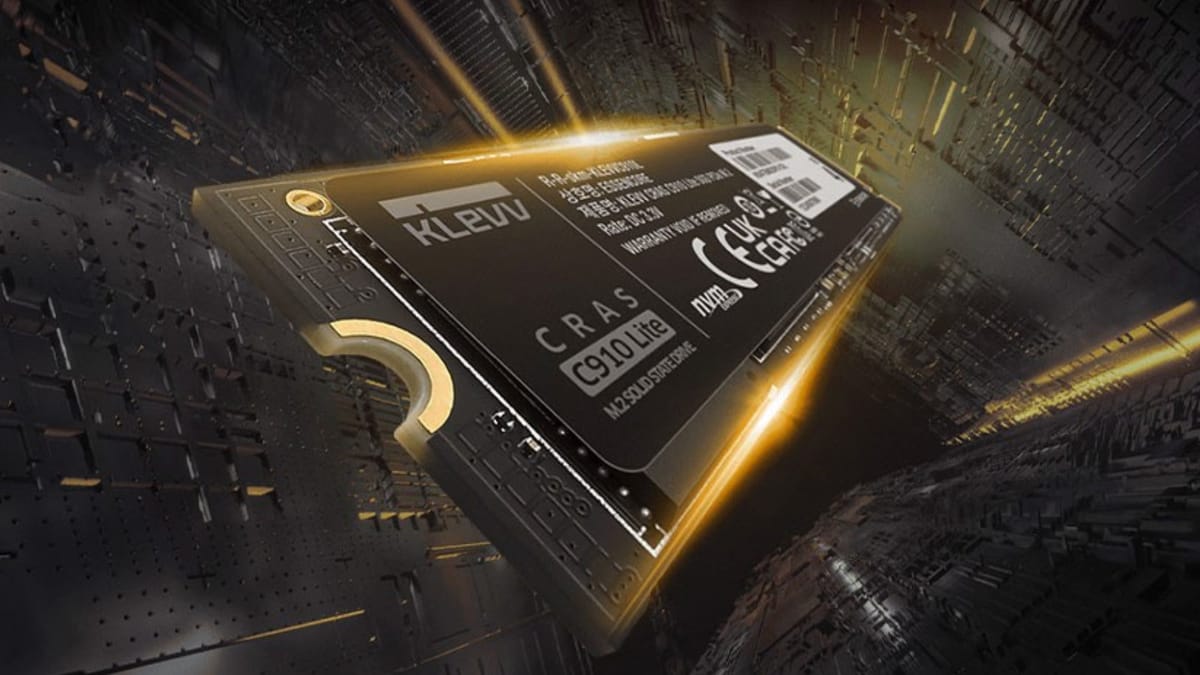
I’m always excited when hardware shows up. It’s even more exciting when it’s from a company you know delivers excellent products. Earlier this year we got our first NVMe drives from semiconductor distributors, KLEVV. We were duly impressed with the C910 and C930, but it was our first brush with this South Korean company. When a new piece of hardware shows up from a company you’ve only worked with once, you get to test something equally as important as the drive itself – consistency. Today we’ll take a look at the KLEVV C910 Lite, a drive aimed at the midtier of the NVMe space. I was excited to see if KLEVV could deliver a third drive, thus cementing the hardware manufacturer as a player in that space.
We’ve focused hard on the fastest drives on the market, but there’s a place for drives that land right in the middle. The ones that comfortably run well around the 5000 MB/s mark, stays cool, and doesn’t break the bank. KLEVV, a part of ESSENCORE, has been in the memory and storage space since early 2014, delivering value-focused hardware. The KLEVV CRAS C910 Lite NVMe SSD fits cleanly in that space, making it a potential choice for inexpensive and reliable storage. Unboxing the C910 Lite, it ships bare, just like the C910 and C930. It does not include a thermal pad in the box, instead relying on the cooling solution included on your motherboard, or a third-party pad or cooling solution.
Looking at the chips reveals a change from its bigger brother. The C930 used an Innogrit IG5220 controller, but the C910 Lite switched to a PS5018-E18. Both controllers are good, so I don’t have a preference between them, as both tend to have extraordinarily stable firmware. It follows the M.2 2280 form factor, carries 3D NAND Flash (we’ll get into that later) and is a PCIe Gen4x4 drive supported by NVMe 1.4. We are testing the 2TB model as we find the larger capacity drives tend to perform better than their 1TB counterparts.

The first thing I noticed is that, while KLEVV follows the standards closely, they’ve also taken the time to try to improve from the standard approach. The drive weighs just 7 grams, and they’ve moved all of the flash memory to the top side of the drive. This is great for heat management as those chips will have direct contact with any thermal pad or heat sink you might employ.
Looking at the back of the box, the CRAS 910 Lite is available in 500 GB, 1 TB, 2 TB, and 4 TB capacities, offering speeds up to 5000/4200 MB/s and 4K Random Read/Write IOPS of up to 680,000/880,000. This places it neatly in the mid-tier, perfect for devices like mini-PC builds, laptops, M.2 high-speed storage for NAS solutions, and more.
One of the biggest predictors of performance is the controller and the memory attached. The C910 Lite uses an LDPC ECC Engine to reduce errors, pairing it with 1TB of DDR4 cache memory being powered by a Micron TLC NAND controller. LDPC, or Low-Density Parity Check ensures both sides agree on the integrity of the data copy before closing out the transfer, thus reducing transmission errors. This is the first drive I’ve seen with this tech, but on paper this should help with wear leveling (not writing to the same space over and over), data integrity, thermal throttling, and adding a security layer of 256-bit AES encryption. All of this, I’m surprised to say, doesn’t add any additional latency or impact whatsoever.
As always, we run our benchmarks at least three times, and after a clean boot. We also work through real-world transfers to see what effect DRAM and other caching techniques have on performance. We use a variety of tools. 3DMark delivers a synthetic simulation of some real-world actions such as installing a game, moving it between drives, starting a match in Overwatch, and more. We also use AIDA64 for a number of tests like sustained writes, linear and random reads, and more. We’ve also find that CrystalDiskMark and ATTO are representative of max values as well as a full complement of various file sizes. Across all of these test, you’ll find a great cross-section of synthetic and real-world performance. We also re-ran all of these, and ran multiples of them on sustained maximums for over 15 minutes at a time. It’s a brutal test, but it showcases a number of interesting data points that we’ll hit as we go.
We’ll start off with CrystalDiskMark as it’ll showcase the maximums, as well as a few targets for random writes. We’ll get back to those in other test suites.
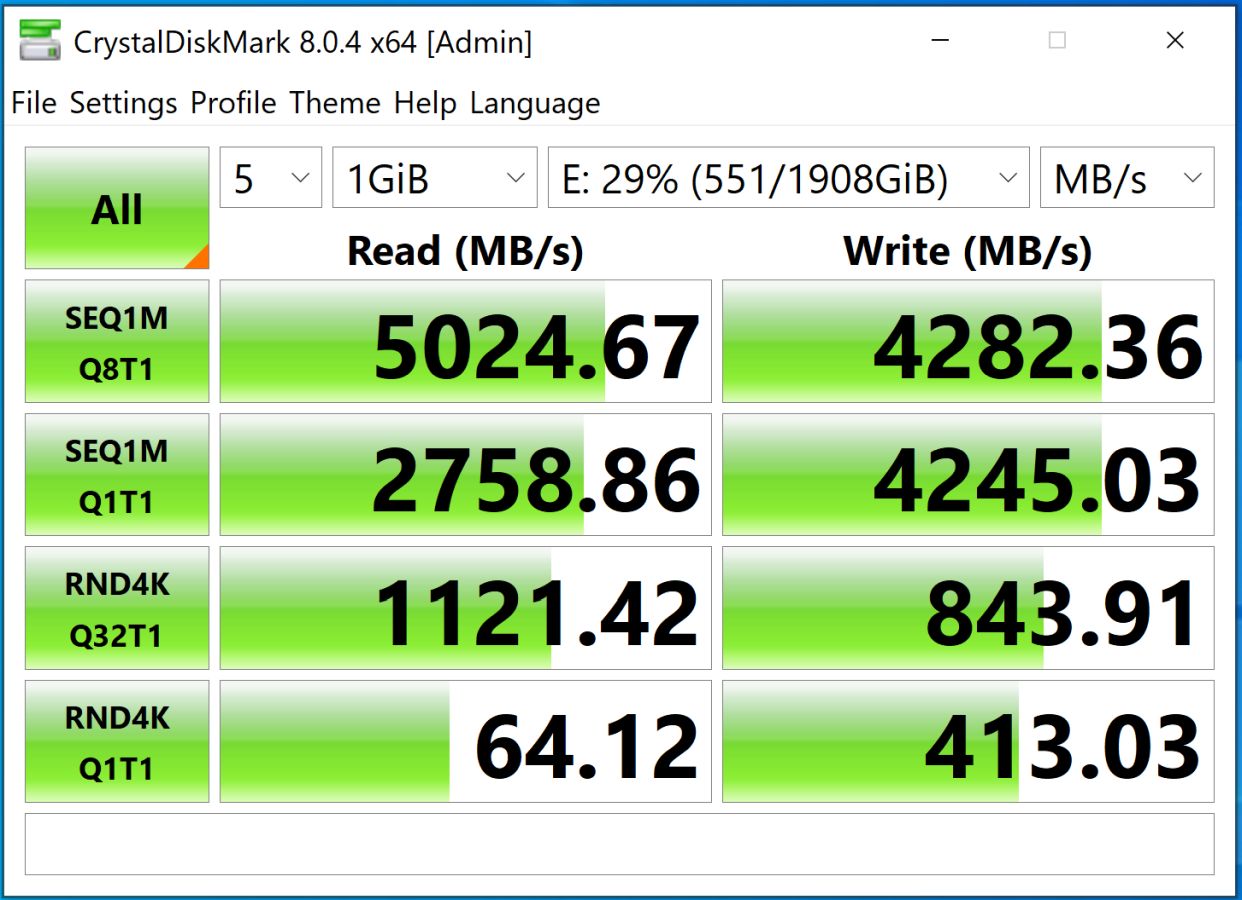
The CrystalDiskMark test is a good point-in-time test, but I also like pulling ATTO tests as it gives a longitudinal look over multiple read and write sizes. Let’s fire it up:
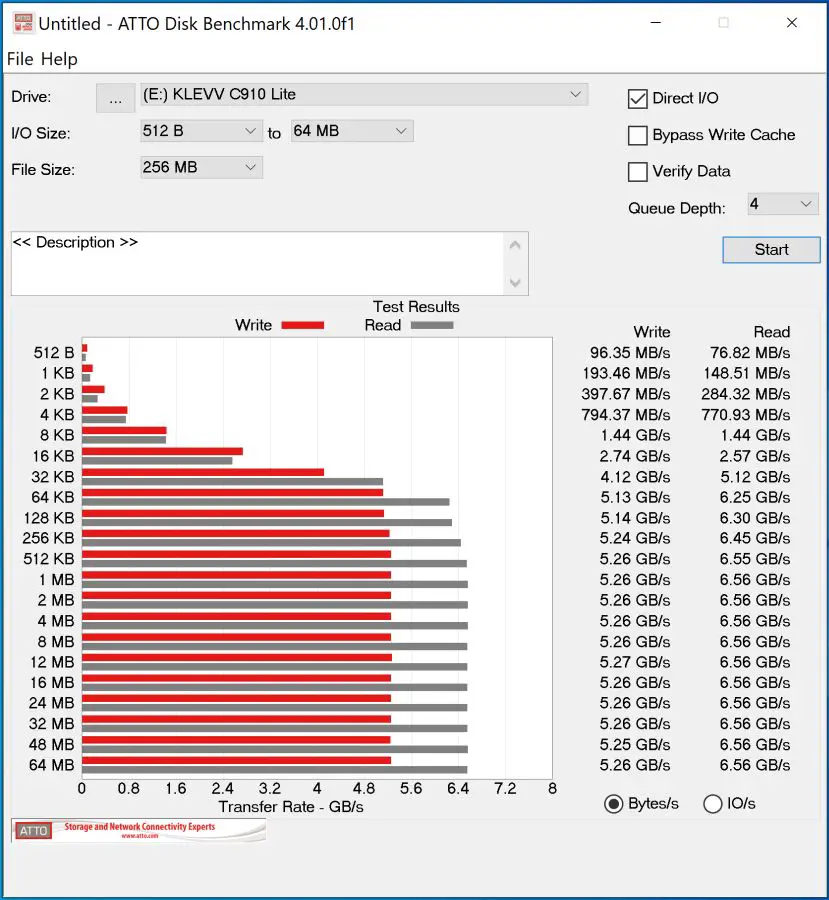
What I like about the C910 is that it is remarkably consistent. Across a wide variety of file sizes, the drive is able to deliver at the theoretical maximum, and well above the committed speeds. Subsequent tests looked exactly the same.
AIDA64 provides a number of different tests that are more indicative of real-world use. We chose the random read test over 10 minutes to start. This test is a block size of 64 KB, moving a number of very small files very fast. The idea is that a copy tends to be a wide variety of file types and sizes, with 64 KB being the smallest of them on average. Better said, this is the “worst case” test where it delivers 1.7 GB/s. Not too shabby.

Switching to the Average Read Access test the graph is…well, underwhelming to look at, but impressive in results. Observe:
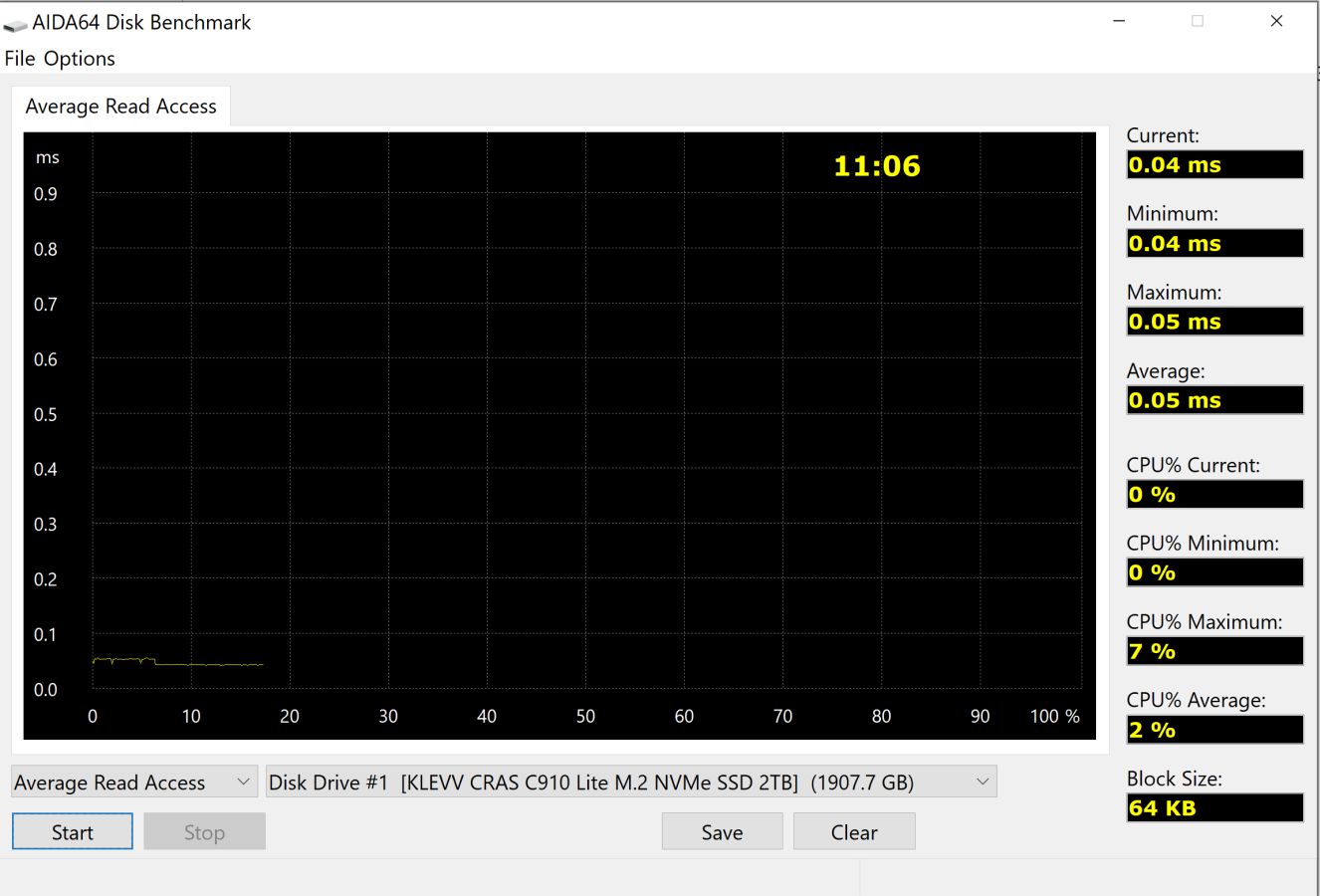
What this seemingly blank test is showing is the spin up and spin down time for every file copy, and this drive can pull that off in 0.05 ms consistently. It makes for a dull graph, but a dull graph is precisely what you want to see here.
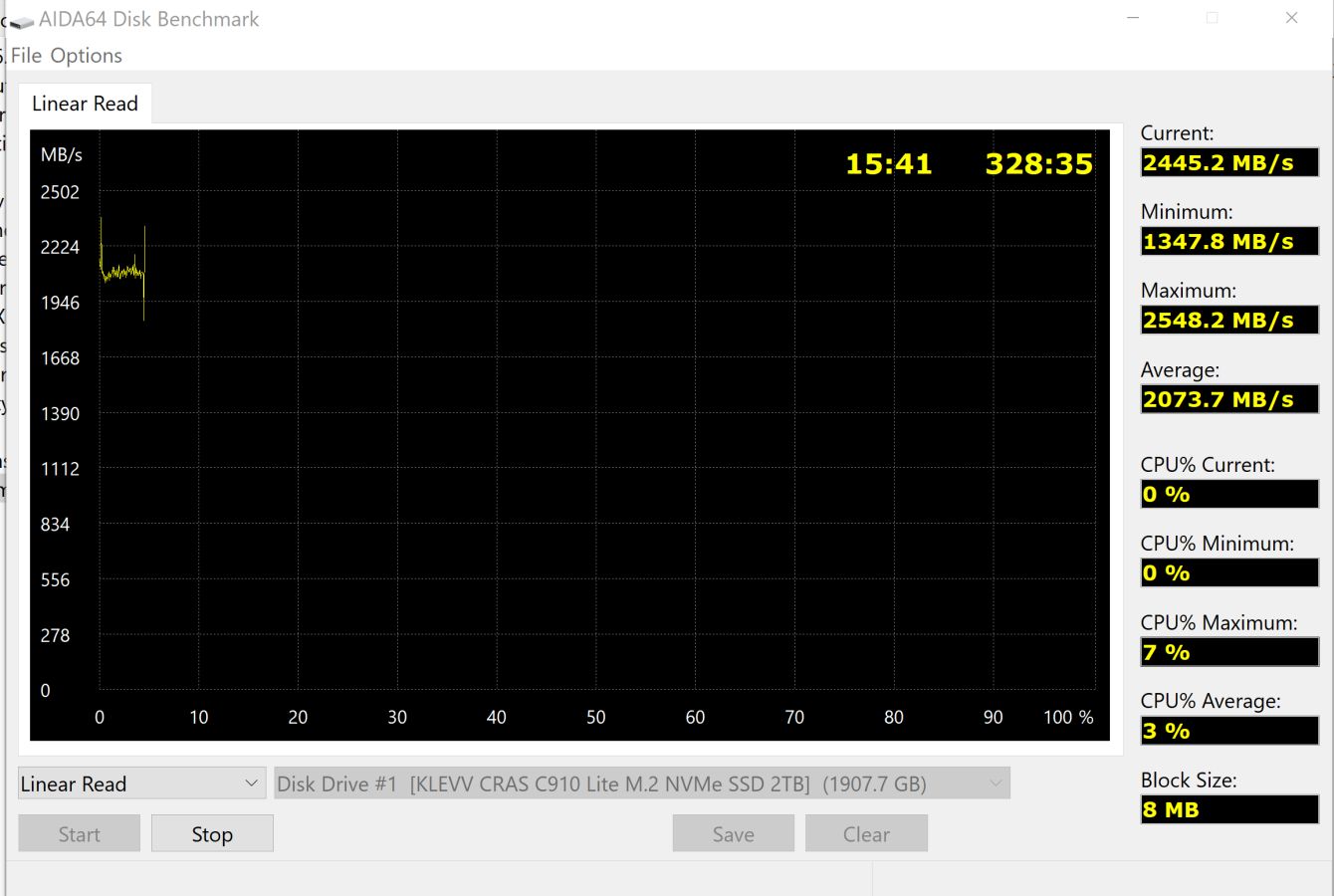
The linear read test is less about speed, but more about the aforementioned data integrity testing. Once again we see very consistent results (Ignore the last blip – my power settings let the system go to sleep and that was the result of it waking up. This has been fixed for future testing).
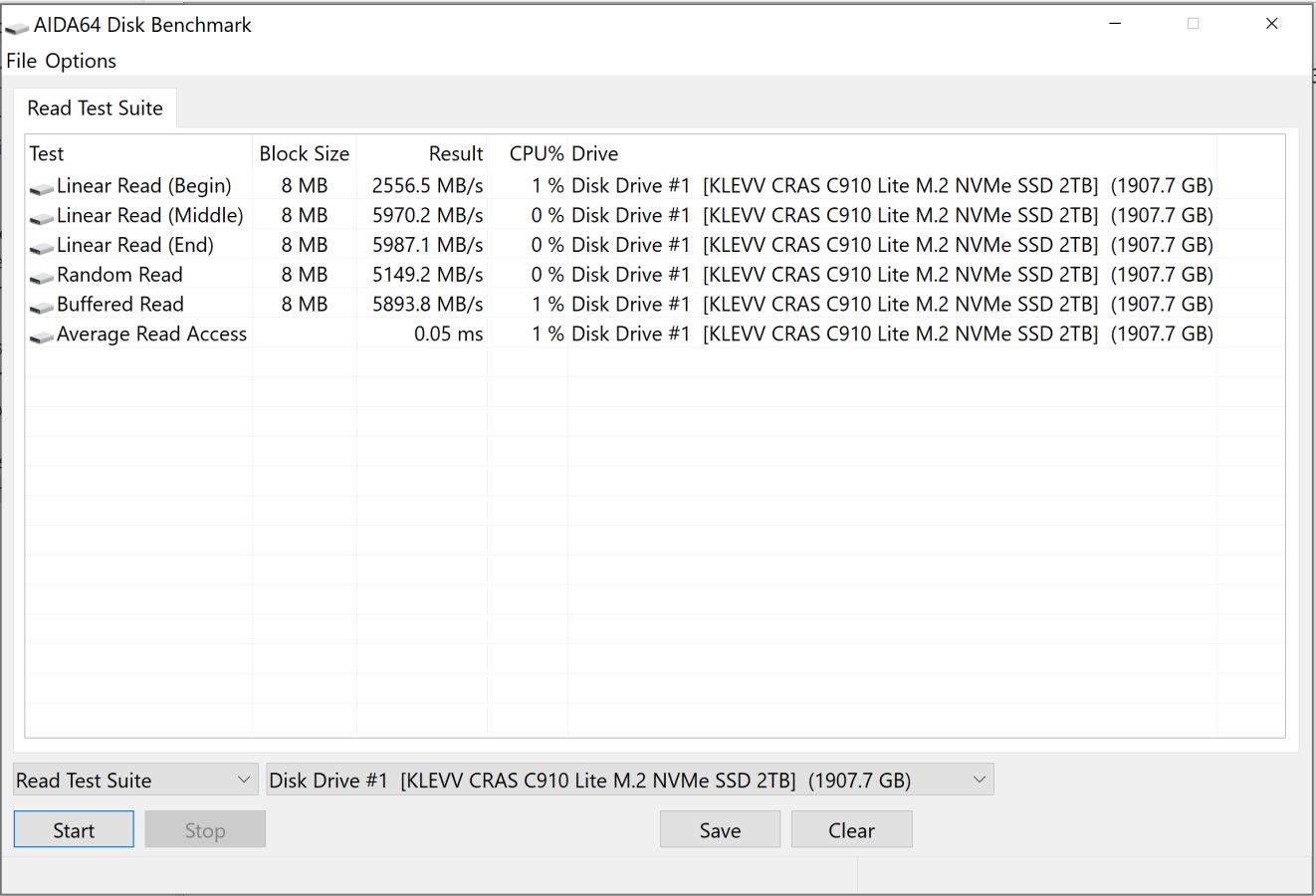
For the last bit of testing from AIDA64 we get a cross section with the suite. It backs up much of the testing we’d seen – once again, consistent.
Switching to 3DMark, their benchmarking suite for storage is supposedly based on real world examples, including loading Call of Duty, Overwatch, moving and installing games, and more. It’s a longer test, and the results provide an aggregate number that’s a little harder to compare, but it does stress the drive a bit. Let’s take a closer look.
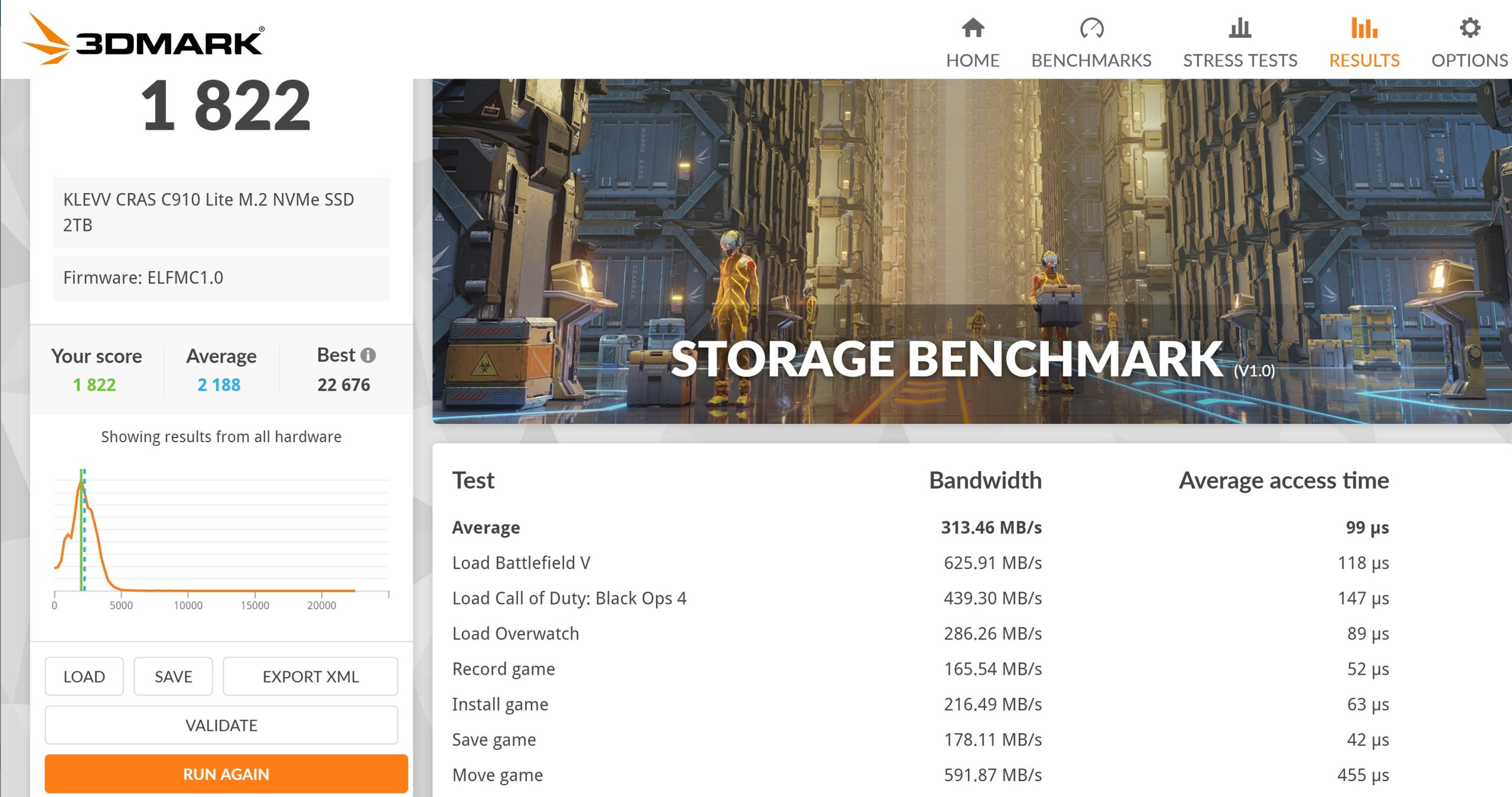
We see many of our previous readings backed up with access times. We also see some real-world times for installations, loading, and moving, all of which involve an incredible number of files large and small.
For the final test, I copied over 10 games from a faster drive to this one. Once again, games are a great real-world example as they tend to have a very wide variety of file types and sizes.
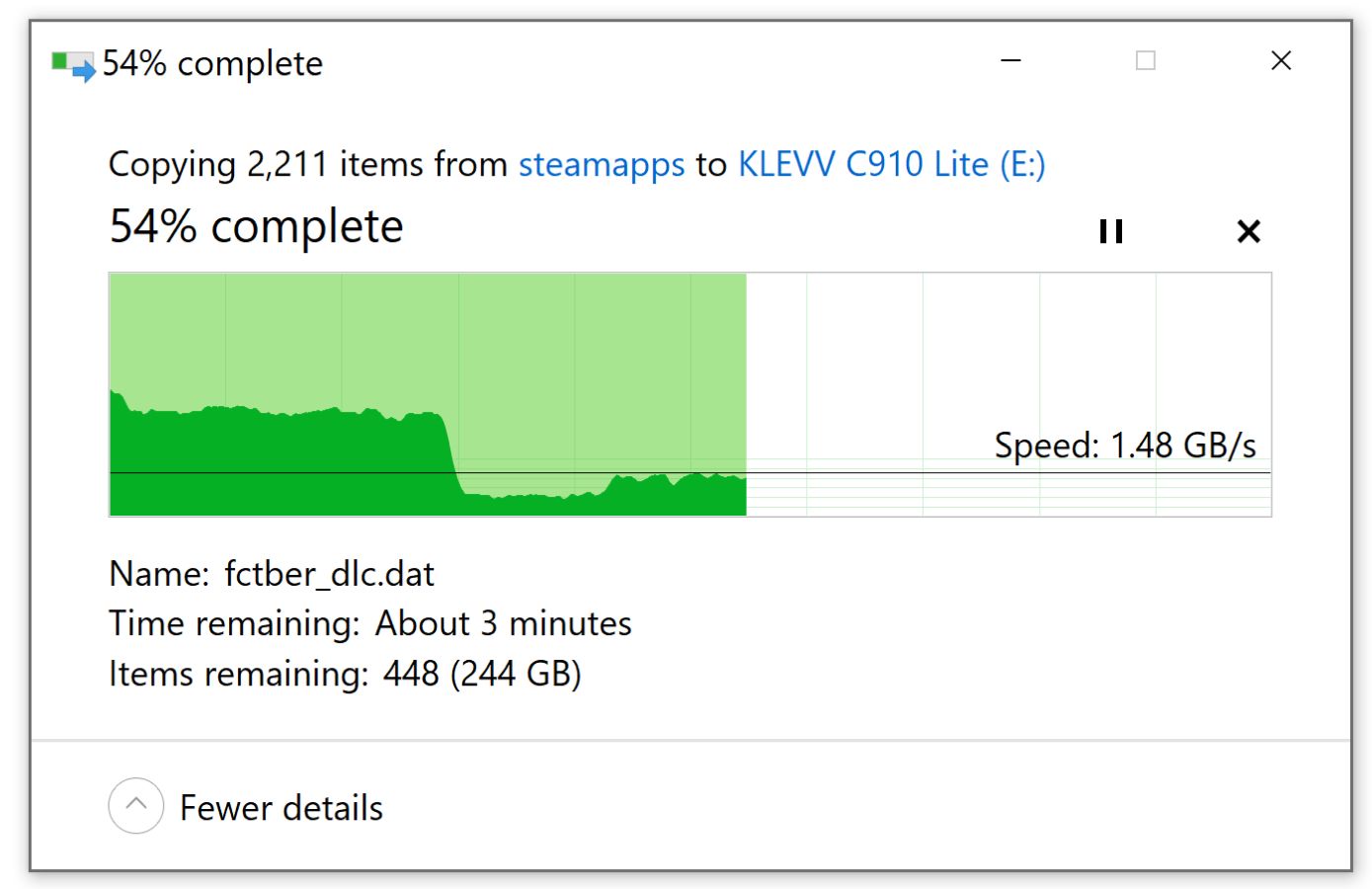
What we see here is the drive performance maxing out for a very long period of time – nearly five minutes, in fact. After that, we finally hit DRAM exhaustion and we see the drive gutter out a bit before coming back up to around 1.5 GB/s – a speed it held all the way through the remaining 244 GB of that copy.
There is one element you might be asking – does this work on a PlayStation 5. Well, the answer is yes, but with a caveat. The team tested it, and it does meet Sony’s 5500 MT/s threshold, but only just. Therefore, this drive isn’t specifically aimed at the PlayStation 5 market as KLEVV tends to be conservative about these things, but it will actually work. At this price, it’s honestly hard to pass up, especially since faster drives don’t seem to deliver any additional performance on Sony’s platform. Just know that mileage can vary, and we are right at the edge of the performance target.
The last stop on any of our hardware reviews is a two-fer – warranty, and pricing. The warranty on this drive is five years, and based on some additional talking we’d done with users of other KLEVV drives since our last review, none of them have ever had a problem requiring a warranty service. While I’d still appreciate hearing from somebody who’s had the chance to exercise the service, it’s encouraging to hear that the gear is holding up remarkably well.
The 2TB drive, as tested, will set you back just $79.99. Yep, you read that right. Think of all the times you’ve run yourself out of space, and the fact that it’s very likely that you have secondary NVMe slots on your board just sitting there empty, and you suddenly have a very compelling reason to solve your storage problem with 2TB of high speed storage. The fact that it also delivers MORE than you paid for and you’ve suddenly got a very compelling reason to pick up the KLEVV C910 Lite.
KLEVV C910 Lite NVMe
Excellent
There’s a place for mid-tier storage, and the KLEVV C910 Lite NVMe is the perfect solution. The price to performance is through the roof, delivering more speed than advertised on the box, and at a price that should embarrass everyone else. Well done, KLEVV.
Pros
- Delivers more speed than advertised
- Excellent price to performance ratio
- Single-sided design
- Consistent across all speeds and reads
- 5 year warranty
Cons
- No included heatsink may require secondary purchase
- Warranty is still untested for us
